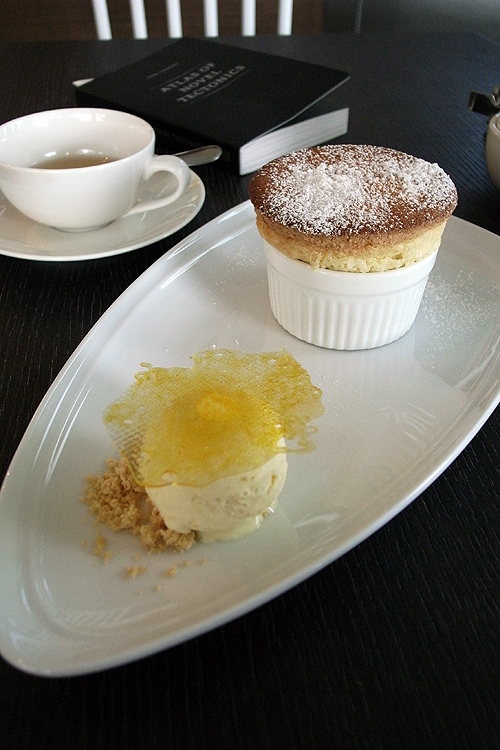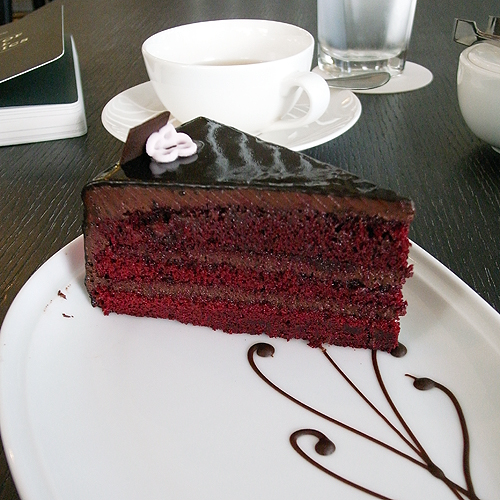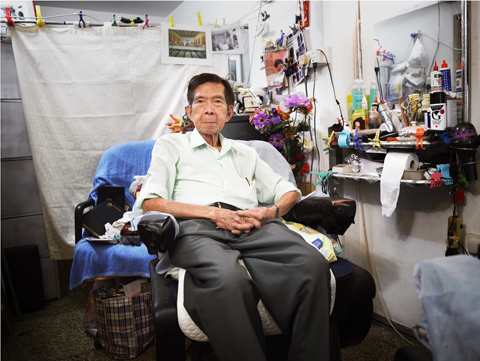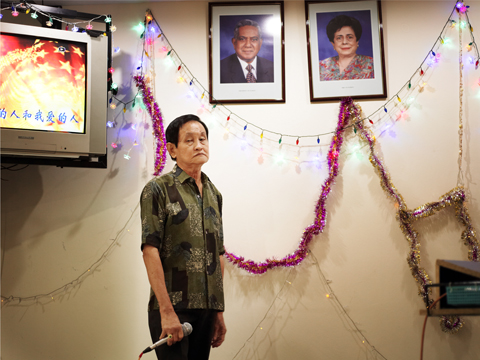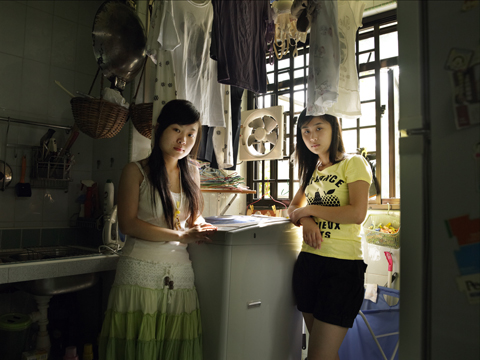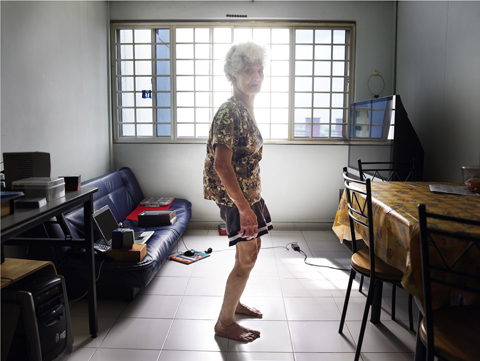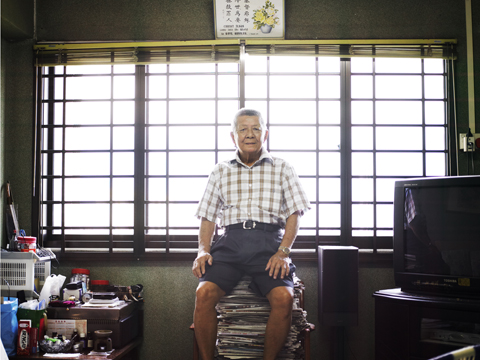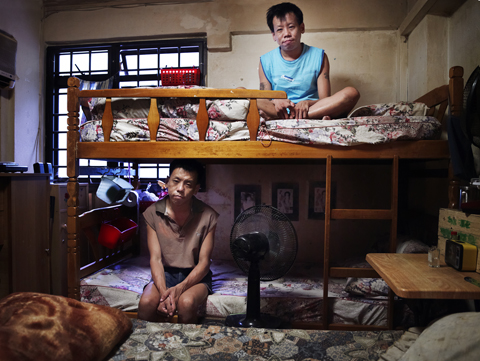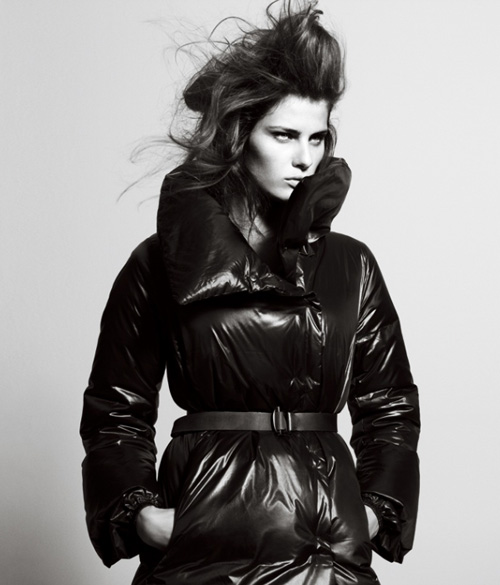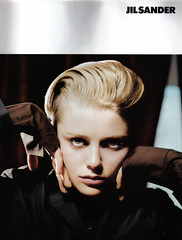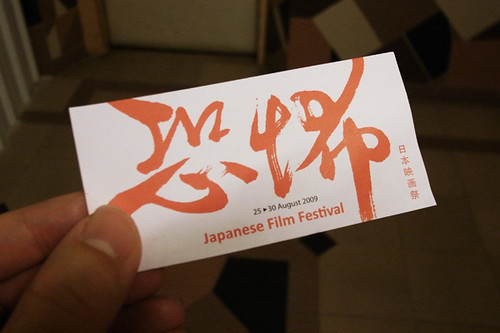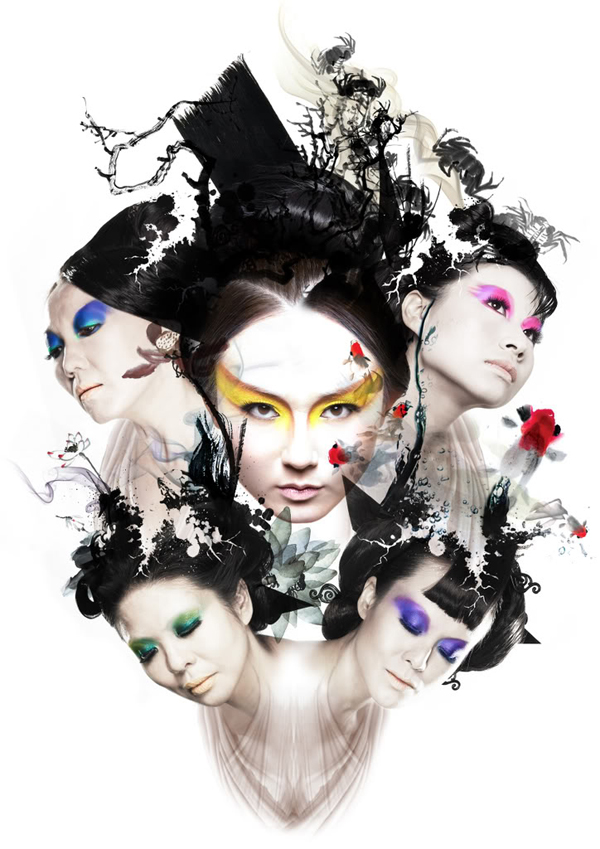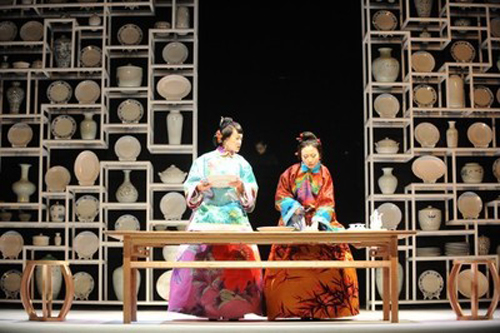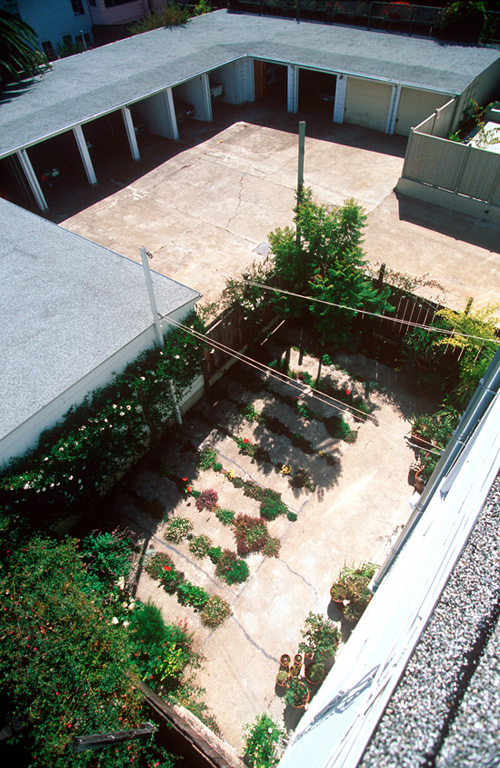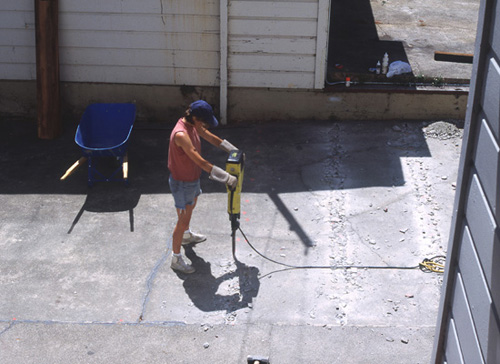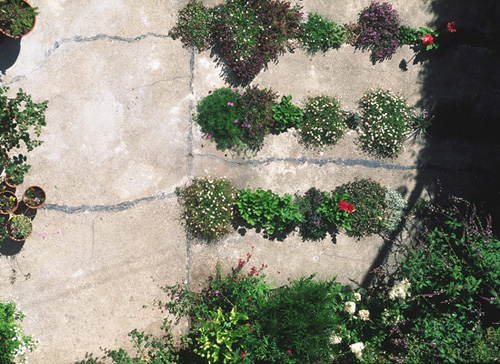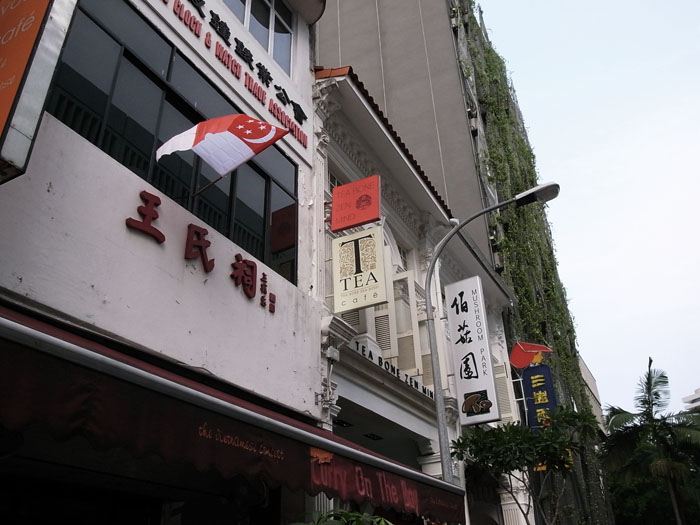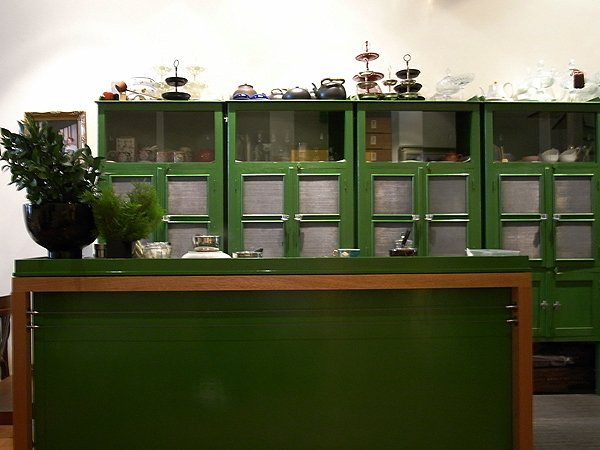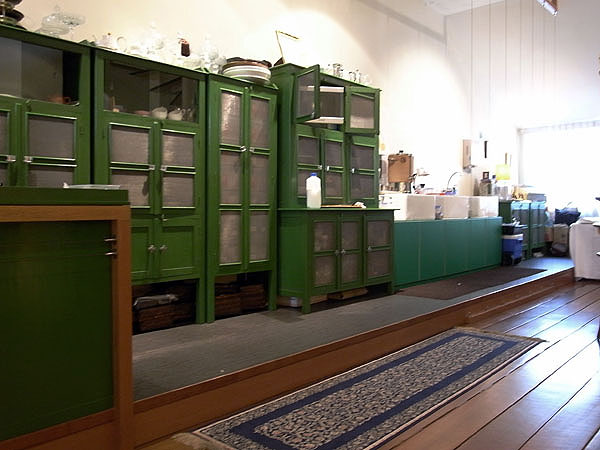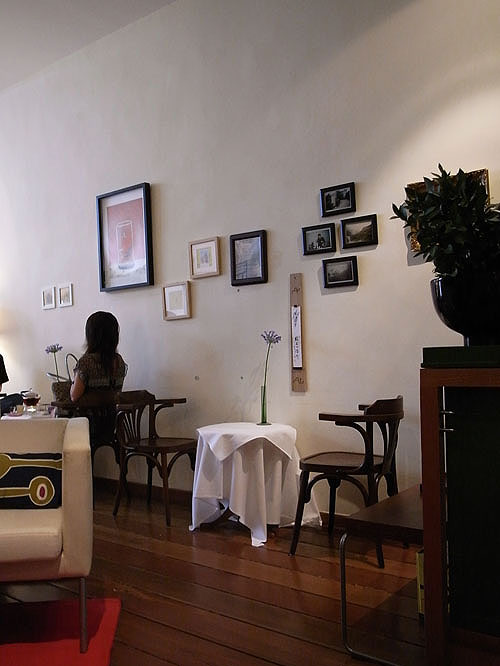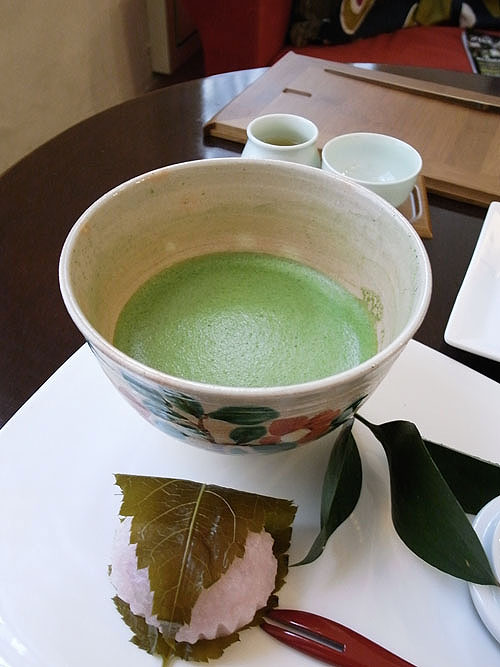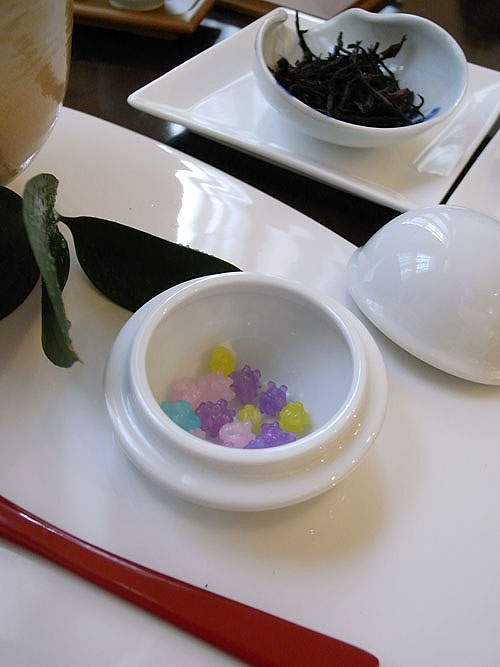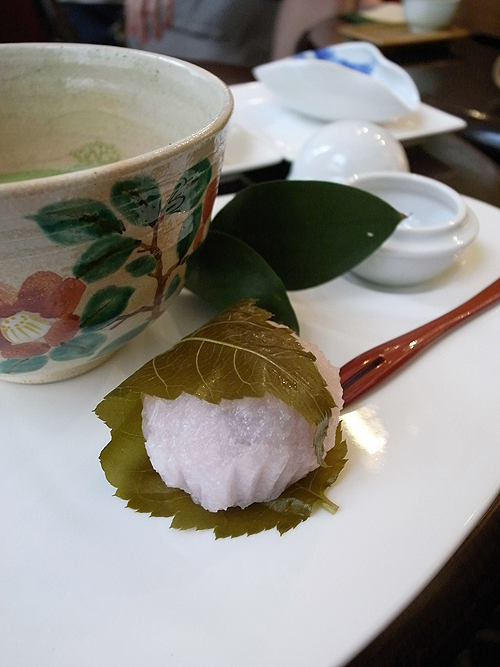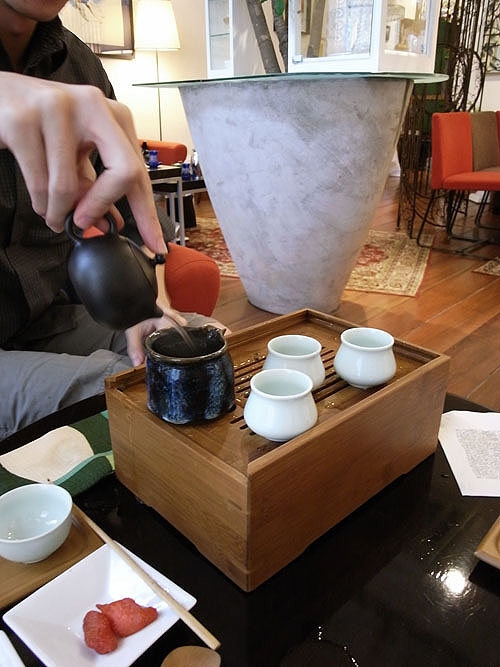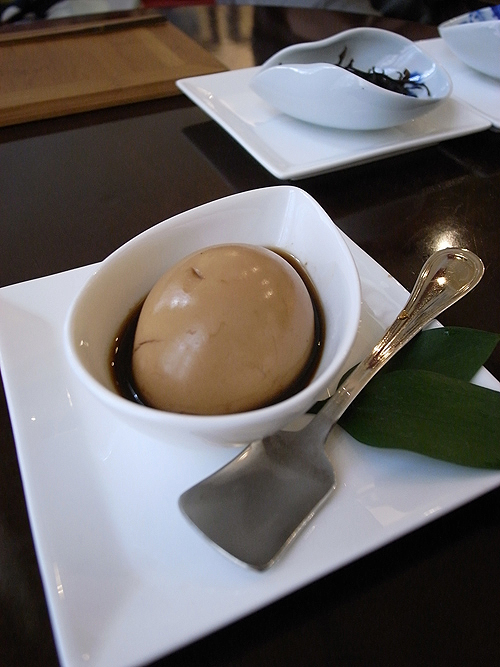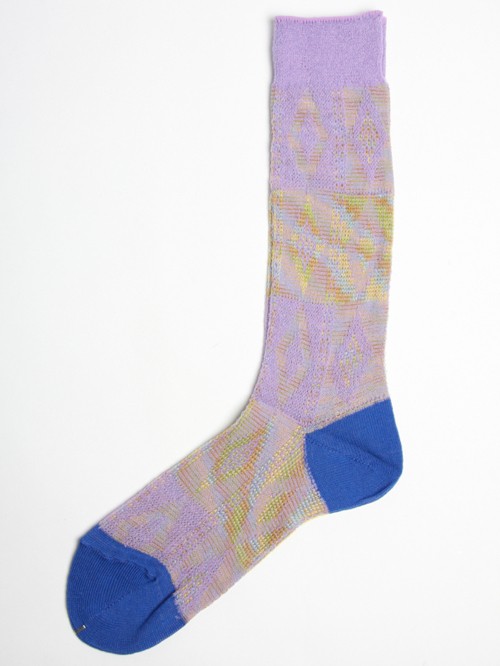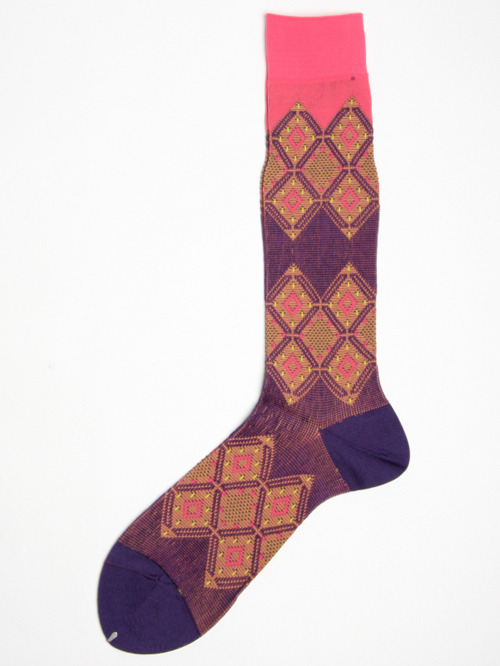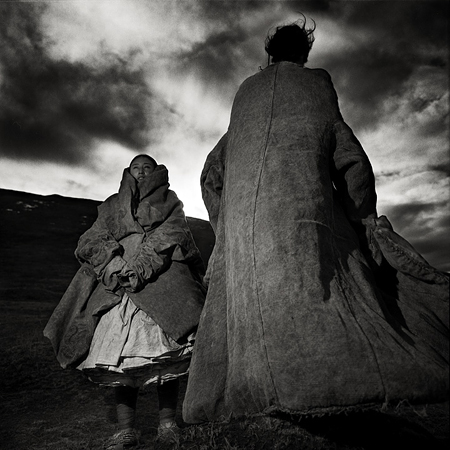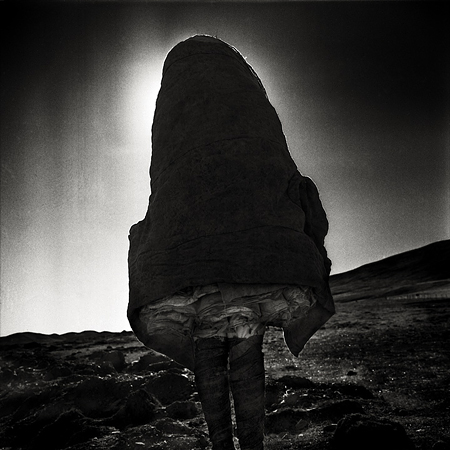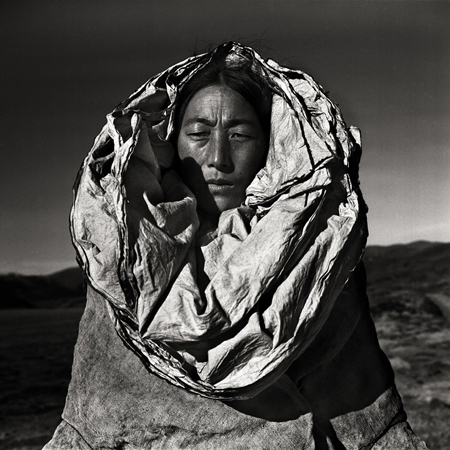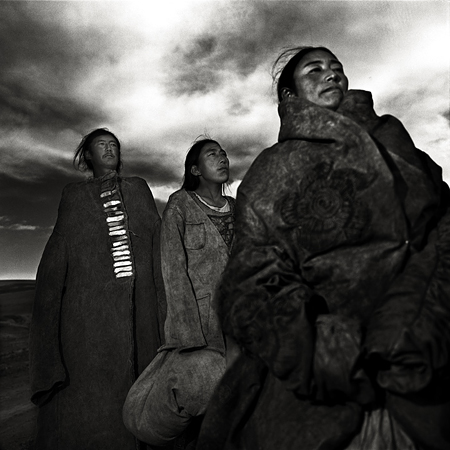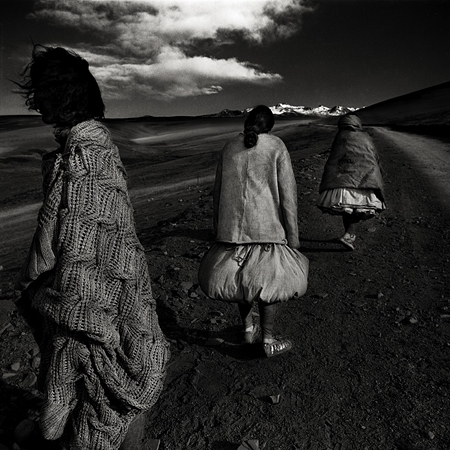I've been wanting to eat at Jaan ever since I came across it while flipping through Appetite magazine during one of my many Saturday afternoons spent at Toast. A particular image that impressed me was that of a cuboid block of smoked salmon, hung seductively on a metal rack, the flesh a deep vermillion with veins of fat streaking across, the skin side is coated with some kind of peppercorn mix. The graphic effect was striking. Jaan, is a small restaurant that is part of the Equinox complex of bars and restaurants at the 69th to 71st floor of the Swissotel Stamford. Renamed Jaan par Andre since the arrival of head chef, Andre Chiang, last year, the restaurant has shot up the list of the top dining establishments in Singapore with Chiang's French Nouvelle menu (whatever that means). The previous incarnation, I should say, was better known for its breathtaking 70th floor view than its food.
Tweeds is in back in Singapore for a few weeks and as always, we use anything as an excuse to go out to eat. And being the type who are easily seduced by fancy sounding menus with unorthodox use of ingredients, we decided to go try the set lunch at Jaan (which is probably the only thing our plebian wallets can afford). 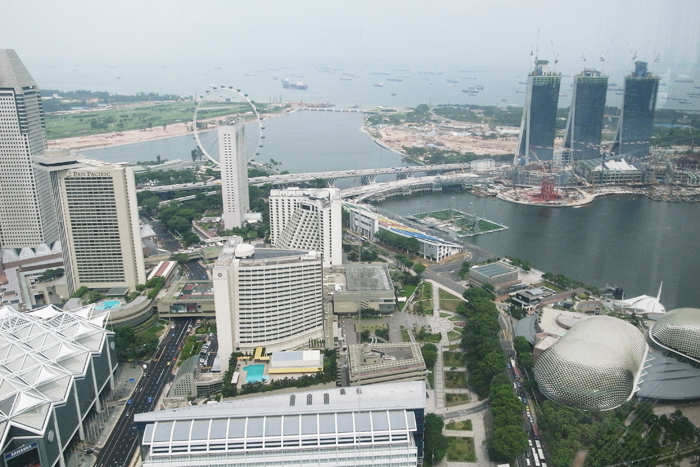
After an ear popping ride up the high speed elevator, we arrived at the 70th floor. Passing by the hotel buffet, we entered the restaurant through a discreet doorway, greeted by a wonderfulview of the southern tip of Singapore, with Marina Bay, the Singapore Flyer, and bits of the Sands casino under construction.And beyond the Straits of Singapore, a faint silhouette of Sumatra. The restaurant turned out to be much smaller than I had expected. It had about 10 tables, of which not all of them were filled on the weekday afternoon that we went, obviously not a busy day. We were promptly seated at a window table facing the panorama of the city, and fortunately so. The interior of the restaurant was a confused collage of Chinese Indianmotif juxtaposed with the ceiling that was decorated with iridescent panels arranged into a 3d pyramidal grid, intersected by 3 rather over the top lighting features made up from fragments of free form glass pieces.
The meal began with the waitress serving a glass with what looked like a cross between twigs and Pocky. Those turned out to be skinny bread sticks in 2 flavours, parmesan and squid ink. I preferred the parmesan one but Tweeds seemed to like the other one more. The bread sticks came with a dip which I can't quite decipher what it was (a little google sleuthing tells me that it acutally a baba ghanoush & goat cheese dip). The bread service was rather underwhelming though but it's not something I would fault any restaurant for. At this point, I was somewhat amused by the bread sticks though not overly impressed by anything yet.
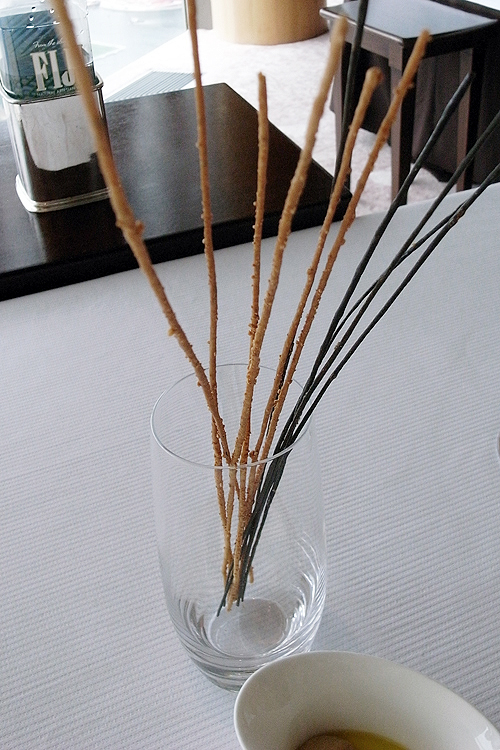
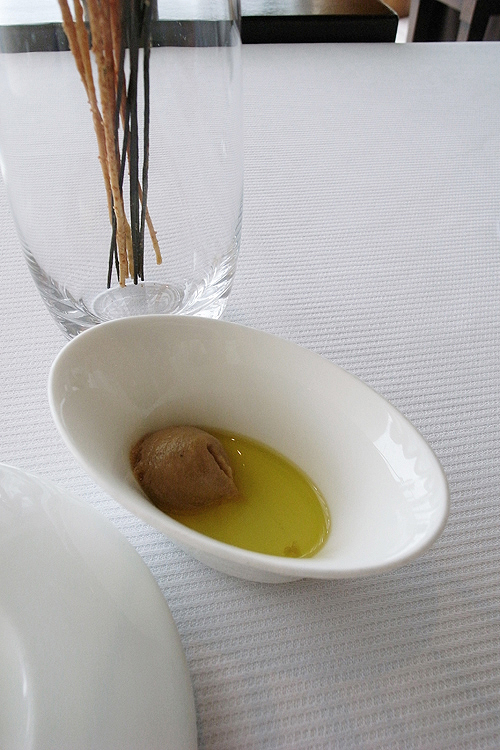
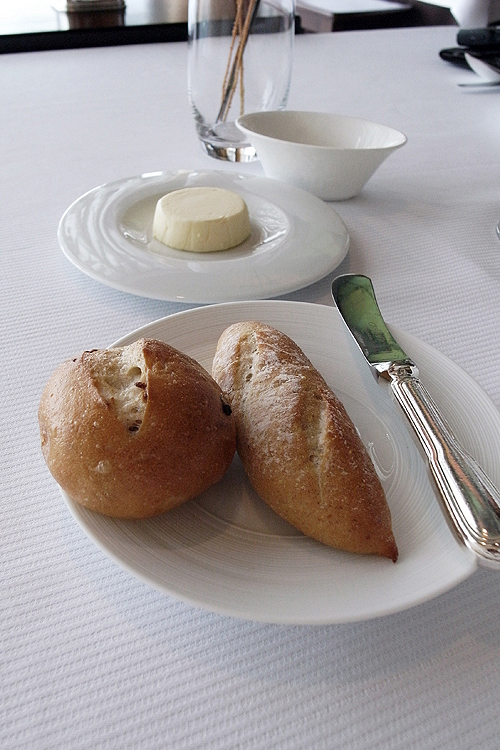
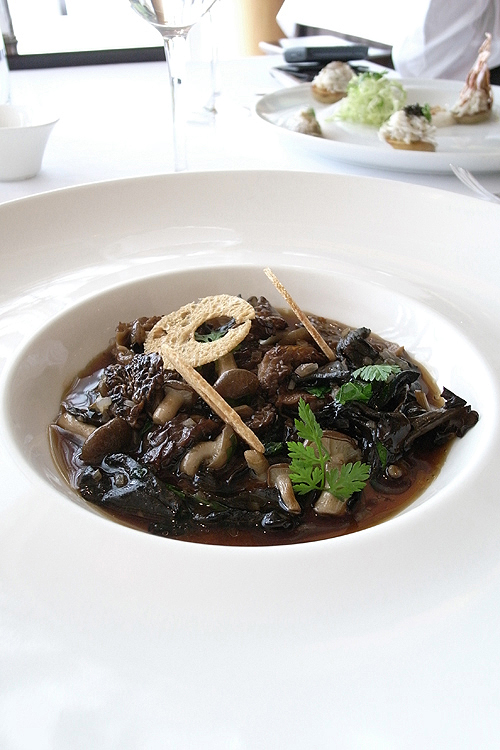
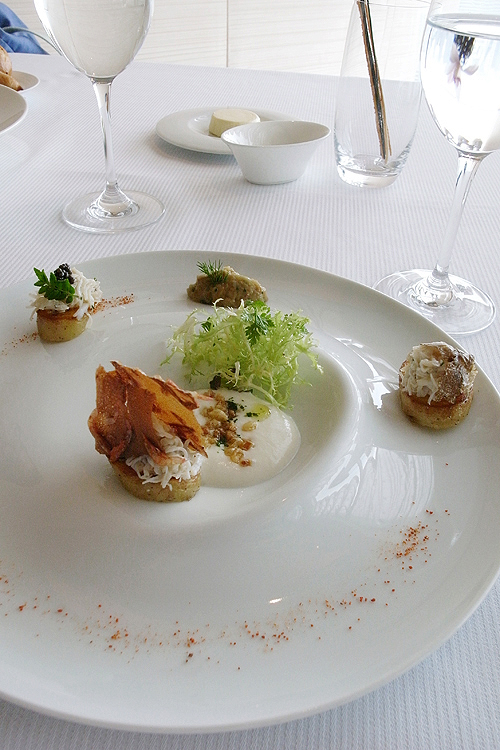
To start, I had the Foie Gras A La Forestiere which was a wild mushroom fricassee and black truffle coulis, on a base of hot foie gras jelly and egg custard, topped with (tiny) slices of crispy buckwheat brioche. Can anyone go wrong with truffles and foie gras? It was an orgy of aromatics, the earthy aroma of the black truffle, morels and the other fungi formed a decadent couple with the sweet buttery notes of the foie gras jelly. In contrast, Tweeds had the citrus scented stone crab effiloché, which was much lighter. It was served on Ratte potato confit with potato mousse, frisee and a salsa verde.
For mains, I had the popcorn ravioli with pan seared tiger prawns wrapped in pancetta, served with shellfish chips and olive oil puree. Having no idea what was inside the ravioli, I tried to slice it open with my knife and the moment I pirced the yellow egg pasta skin, the ravioli popped open and a creamy yellow foam oozed out. The foam, turned out to be a corn foam. A clever play of the idea of "pop/corn". Gimmicks aside, the play of flavours and textures on the plate was incredible. The sweetness and body of the corn foam, together with the slight chewiness of the pasta skin forms a counterpoint to succulence of the perfectly cooked tiger prawns and the crispiness of the seared pancetta. The lusciousness is in turn, contrasted with the brittle crunch of the shellfish chips (which I think would do very well as a Chinese New Year snack, they should consider selling it on its own).
Tweeds had the char-grilled kurobuta cheek on a bed of romaine potato mash with mustard seeds, caramelized baby onion and smoked basil oil. The dish was pleasant though not terribly exciting. The pork cheek was a little too lean and in the words of Tweeds, it was "disappointingly un-gooey", lacking the gelatinous quality of the fatty layer. What I did like was the romaine potato mash which was warm and mushy (in a good way), with the lettuce still retaining a bit of crunch and the little pops of flavour from the mustard seeds.
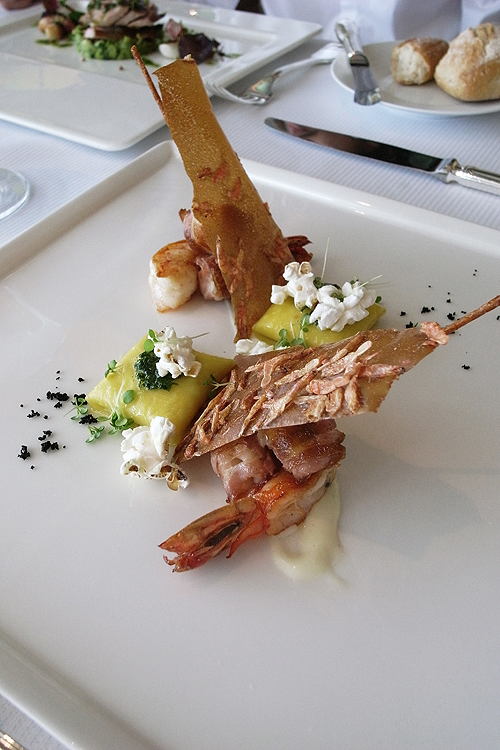
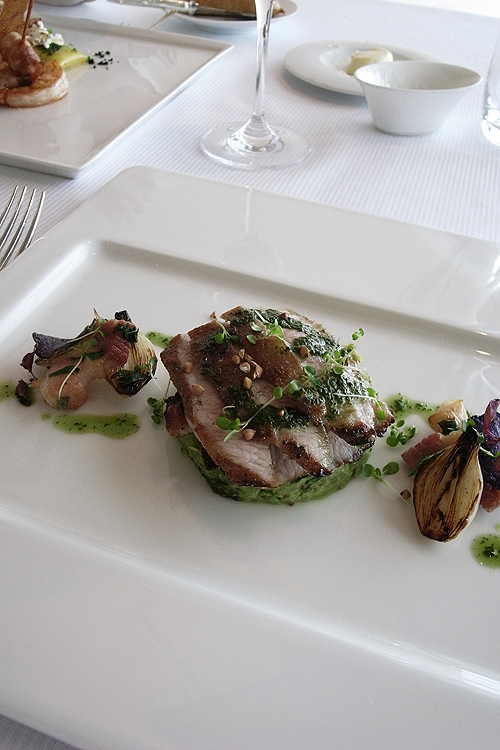
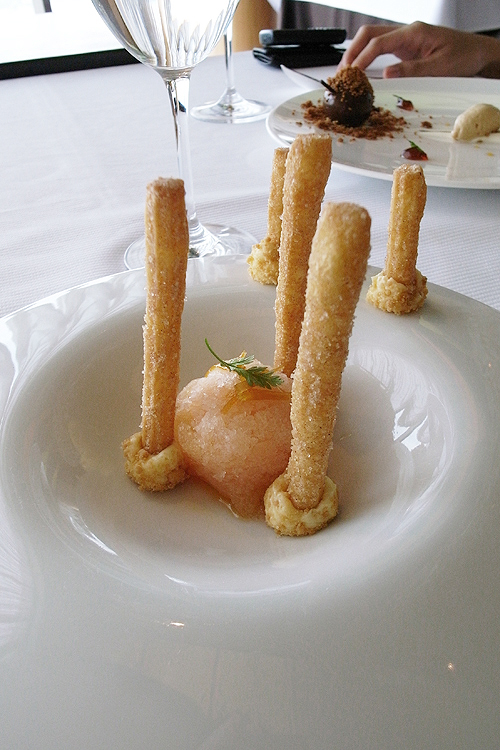
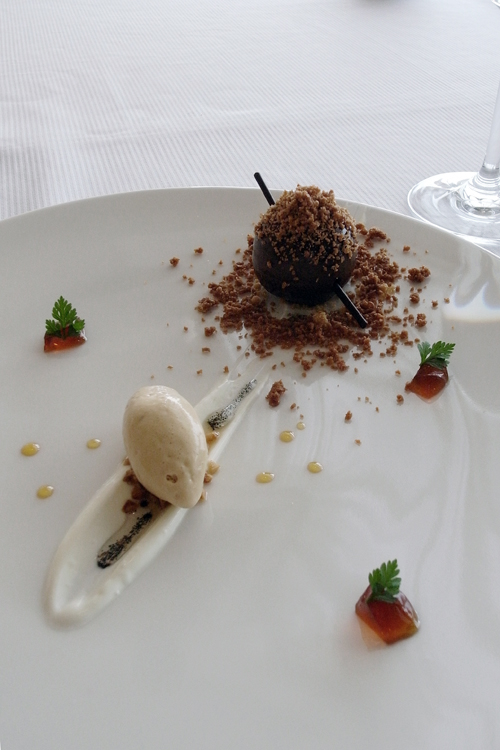
Ending the meal, we had a choice from a selection of three desserts. Tweeds chose the Snickers bar version 2009, which is one of their signature dessert, and obviously not literally what the name says it is. It is essentially a deconstructed snickers bar, composed with a chocolate truffle, ground peanuts, caramel jelly and a scoop of caramel ice cream. The truffle, laid at the side of the plate was sprinkled with ground peanuts; it looked like a frame from the high speed photography of the impact between two bodies, the components frozen at the moment of impact; the scoop of caramel ice cream, a fragment broken off from the impact site, spun into another trajectory. The debris-like bits of caramel jelly each with a tiny mint leaf on them were scattered around the plate. (I kept thinking they look like bits of the mangled jelly from the buffet restaurant downstairs but it was tasty). The caramel ice cream, paired with a pinch of ground peppercorn, I thought, was a rather delightful combination.
My dessert was the Lemon tart which was not really a lemon tart (surprise surprise!) but a twist on the original concept. The plating is a phallic garden of mini churros, held in their stiff stance with dollops of lemon infused mascarpone cheese at the bottom end, best eaten with your hand. Surrounded at the centre surrounding was a ball of grapefruit campari granite, which was sweet, tart and refreshingly cold, a good end to the meal.
I had throughly enjoyed the meal at Jaan. Although, the techniques employed by Chef Andre may be unorthodox, the cooking is still rooted in the deep understanding of flavours, textures, presentation and the use of good quality ingredients. It manages to veer the fine line between having the progressive drive to explore new boundaries and falling into mindless gimmickry. The result is an exuberant play of flavours and textures and a sincere attempt to amuse, delight and excite, that can be found in every beautifully composed plate.

Jaan par Andre
70th floor Swissotel The Stamford
2 Stamford Road
